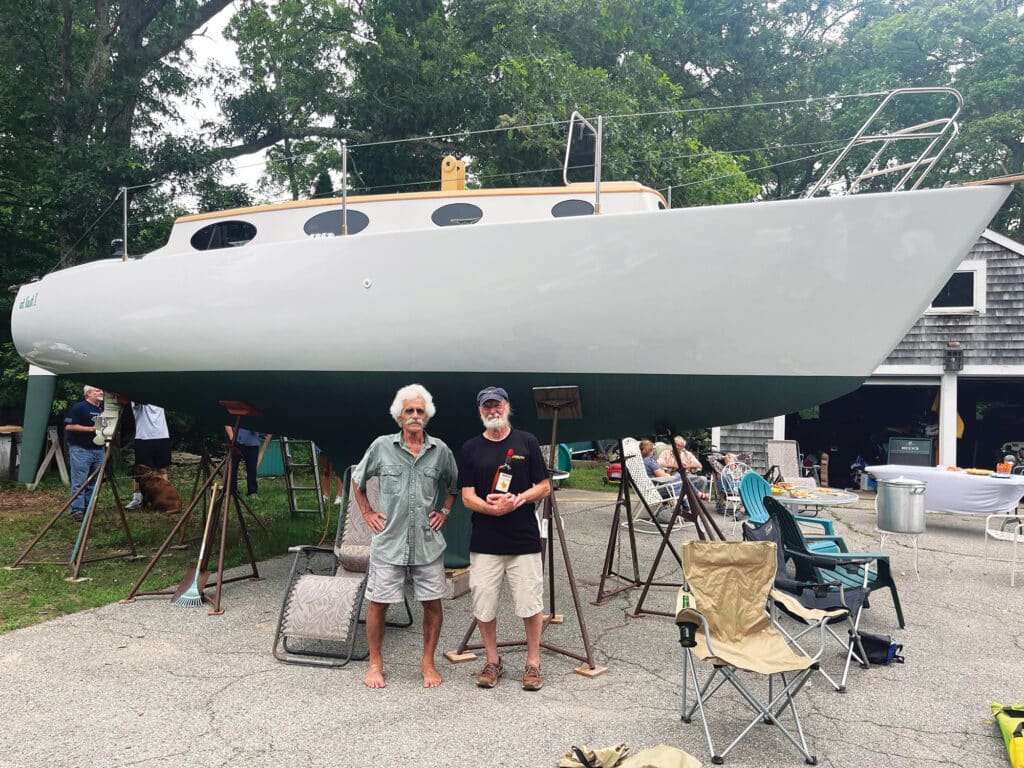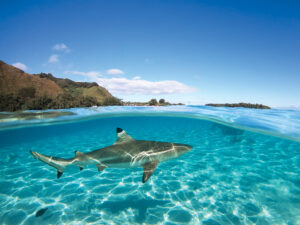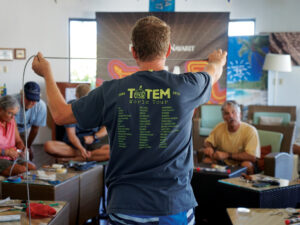
It was an unsettled early evening in the picturesque Rhode Island seaside town of Little Compton, and the question wasn’t if the skies would soon open to torrential downpours, but when. Happily, at least at the outset, the rain held off long enough for the growing crowd to have a good look at the focal point of the gathering, the belle of this cheerful little celebratory ball, sitting in the driveway just steps away from the big barn from which she’d finally emerged. Jud Chase’s home-built cruising boat was immaculate. The attention to detail was stunning. The compact 30-footer, At Last, was nothing short of a work of nautical art.
The technical details of At Last’s construction make for a cool, compelling story. But the boat itself is only a small slice of a grander yarn. In fact, the creation of At Last is a tale of family, perseverance and collaboration. It’s also about friendship. Oh, and the rather inescapable fact that it took the better part of 40 years to build. At Last, indeed.
It all began in the mid-1960s, when Chase and the boat’s designer, naval architect Danny Greene, were classmates and best buds at Durfee High School in nearby Fall River, Massachusetts. (Danny and I later became pals and colleagues on the editorial staff of this magazine in its early years.) After graduation, they lost track of each other for a spell—while Chase refurbished a catboat, Greene earned his design and engineering degree from Webb Institute—and then reconnected in the early 1980s quite by chance. Or was it kismet?
“I told him I was thinking about building a boat, and he said, ‘Oh, I could design something that would be just what you want,’” Chase recalled. “I was looking for something comfortable, safe, lively, and responsive that I could cruise on Narragansett Bay and the cape and islands.”
With that, the pair began noodling over the lines for a design Greene would ultimately dub “Cloud Nine”: a nod to both the boat’s 9-foot beam and roughly 9-meter (about 30-foot) length overall.
Fortuitously, and not coincidentally, Chase had begun working for cutting-edge boatbuilder Eric Goetz, which was basically a master class in laminating strong, fast, light hulls. “I had access to some of the best people in the industry building high-end boats,” he said. “The engineers and naval architects who helped me were huge in the project.”
At Last benefited greatly from the shared knowledge and input. Displacing 7,500 pounds with a 5-foot draft, the hull is strip-planked South American cedar—a half-inch-thick by seven-eighths wide—scarfed together the length of the boat and topped by two layers of red Meranti veneer, with additional layers of fiberglass inside and out (the interior glasswork and tabbed bulkheads were vacuum-bagged).
Chase’s son, Peter, an infant when work began, grew up to be a talented metalworker who fabricated the 315 stainless-steel pulpit (“No rust spots on this boat”), and bronze forestay fitting and rudder gudgeons. For the rig, Chase found, refurbished and stepped an old J/30 spar on a tabernacle. The engine is a 10 hp Yamaha outboard with a long shaft mounted in a cockpit well. The lead keel came off one of Goetz’s personal boats that Chase cut to shape with a chainsaw. It seems that every part of the boat has its own story.
Which, of course, leads to the name itself. Over the decades, the project proceeded in fits and starts, with the usual constraints of time and money. But when it was finally time to launch, Chase didn’t have a name. A family friend, cresting her 100th birthday, asked about it and came up with the answer. For perhaps obvious reasons, At Last is pretty fitting, but the real inspiration was an old tune of the same title by the great Etta James (the lettering on the hull is in the same font as that on her original release of the song).
“I found a dream that I could speak to,” she sang, “a dream I can call my own.” Now, At Last has transitioned from Chase’s dream to reality. It’s time to go sailing.








